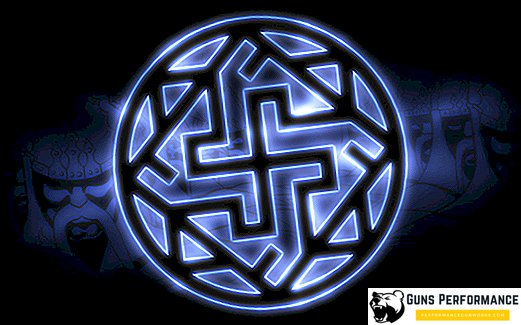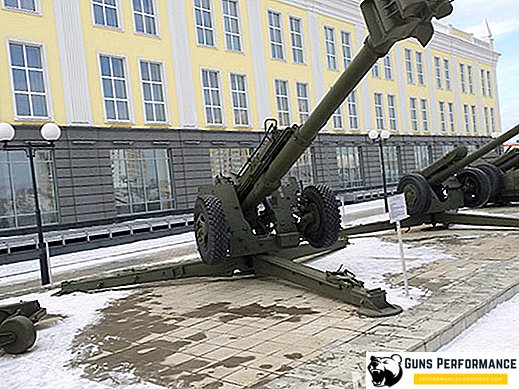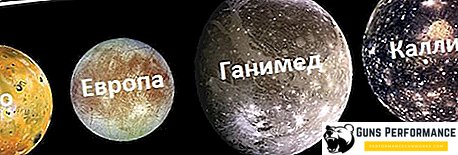For a long time the Slavs tried to protect themselves and their loved ones from all sorts of diseases, evil, slander and other problems, used the magical properties of things to protect the home. The main cult of the ancient Slavs, inherited from their ancestors, was the cult of the Sun, so most of the Slavic amulets were always associated with solar signs. For the amulets of the ancient Slavs, universal magic items are not characteristic - each was valid in a certain area, although sometimes there were also "multi-profile" talismans. One of the best examples of individual amulets with which a person should never part is the solar sign of Valkyrie.
Slavic charms created a kind of energy screen, and were selected not only by value, but also by the characteristics of a particular owner. Nowadays, when they are bought on the basis of aesthetics and beauty, it is necessary to remember that everyone has a certain meaning. Failure to observe important points when choosing an amulet may adversely affect the health of the person wearing it.
Talismans in the culture of the ancient Slavs

The culture of any nation has its own characteristics:
- Traditions;
- Myths and legends;
- A certain worldview;
- The system of esoteric images.
The foundations of the life and worldview of the Slavs were laid on the basis of the simplest geometric shapes. Studies have shown that the Slavic Kolovrat has much in common with the form of the Milky Way and DNA.
Secrets of the correct selection of magical protection

Symbols and charms of the ancient Slavs are currently sold in any large city. Not everyone knows that only properly charged amulets help to preserve health and auspicious aura. Each character, no matter how beautiful it looks, is nothing more than a trinket, if you do not concentrate the positive energies inside it. Although the ancient Slav could independently fill his amulet with the power of nature, the most valuable and expensive were made by magicians. Now it’s almost impossible to meet a person who possesses the ancient knowledge of a wolf, but you shouldn’t get upset; the amulet easily charges itself. To do this, it is enough to perform a series of simple rituals aimed at unity with nature.
Amulet is one of the best defenders against disease and the evil eye, provided the correct approach to the choice:
- Examine the variety of amulets, the rules of their wearing, the protective properties of each artifact;
- Determine what properties the necessary amulet should possess;
- To pick up the necessary material for a charm. The most complex talismans are traditionally made of silver, sometimes there are also expensive gold products, but silver is considered the metal of magicians. Wooden amulets have more forces of nature, such wards were worn by the ancient magicians.
The choice of the mascot "for good luck" implies the use of your own intuition. Some rely entirely on this, forgetting even to understand the meaning of symbols. You can often find women wearing men's Slavic amulets, as their choice is due to the external beauty of the talisman.
It happens that some talismans cannot be identified, although they are amazing in their beauty. In this case, you need to contact an expert in this area who will not be the seller near the transition or on the market. The modern level of technology makes it easy to check your favorite amulet in special forums on the Internet. Buying a talisman from an unverified vendor can be dangerous - distorted runes will not only be useless, but can also harm the owner. People who believe in the power of amulets, but do not understand them, often wonder why a magic object with incomprehensible signs does not fulfill its functions. Even the famous and many famous Kolovrat, personifying life, can symbolize death, if the rays on it go in the opposite direction.
Competently chosen Slavic symbols on the wards will make of a beautiful knick-knack a personal assistant, able to protect its owner, his relatives and home. If the mascot does not fulfill its functions:
- It was made not according to Slavic customs;
- The amulet is not charged, or this rite was wrong;
- The man picked an inappropriate defender for himself;
- Charm is used incorrectly.
One should not think that talismans are capable of fundamentally changing the destiny of a person, their impact is reduced to strengthening the aspirations of a person aimed at spiritual and physical self-improvement. Only daily work on oneself can make the owner of the amulet successful in various undertakings.
Types of Slavic amulets

Slavic charms can be divided into several main categories:
- Masculine;
- Women;
- Baby;
- To protect the home;
- Universal.
In the modern world, people do not feel connected with nature and higher forces, but charged amulets constantly affect the aura. Thoughts are of great importance in a person's life: if they are clean, then the aura is considered light.
In the beliefs of the ancient Slavs, all charms are divided into male and female, as the patron gods are different for everyone. Each Slavic deity was associated with a certain natural phenomenon and was considered the patron of various social strata of the population.
Men's and children's amulets are traditionally simpler than women's, the latter were distinguished by peculiar beauty. In addition to ordinary amulets, women often wore embroidered shirts with other magical symbols that enhanced the effect of the amulet.
Slavic charms for men

The most common talismans are Slavic amulets for men, and this is not accidental. It was the hunter and the warrior who had to carry the talisman with him all the time, able to protect him from the beast in the forest and the enemy on the battlefield. Men's charms differed aggressive energy, the soldiers could often find talismans, showing the commitment of their owner Perun. Many men's amulets protect the health of the owner and bring good luck.
The most valuable are the male Slavic amulets of silver, made by the hands of a mother, sister, wife or girlfriend and charged with a sorcerer. You can wear witch marks in the form of a neck decoration, sew them on military equipment, knock on weapons or paint on clothes, such talismans will become real helpers in any difficult situation.
The most popular ancient Slavic charms for men:
- Seal Velez. Such a magical object looks like a bear or wolf's paw, because Velez was considered a werewolf god. Amulet was popular with sorcerers. The most famous of these werewolves was Prince Vseslav-Wizard. It should be noted that the werewolves of the Slavs did not use honor, so this talisman belongs to the dark pantheon. The man wore it all his life, not parting with him for a minute. At present, such a guard will suit firefighters, hunters, fishermen and travelers, he is able to protect the owner from various misfortunes and misfortunes;
- Vseslaver - preserved with the power of fiery energy, protects the owner from rifts, bad weather, evil eye and damage. The amulet was often used to establish relations between the ancient Slavic tribes, helped to protect the family from war and robbery, it was familiar to the clan in some peaceful tribes;
- Gromovik - a talisman that enhances male character traits: masculinity, courage, valor, is able to make a man stronger and more enduring, increases self-confidence. Previously, it was worn exclusively by warriors, now it is often used in everyday life. Talisman protects the owner from damage, evil eye and evil spirits;
- Grozovik - amulet of the ruler of the elements, makes a man wise, strong and brave. The description of this talisman says that in ancient times it was used by the Magi, who wanted to gain power over the elements of nature. The best gift for sailors, firefighters, rock climbers, fishermen and geologists;
- Dukhobor is a talisman for those who seek to reach spiritual heights. Great for hermits and people who want to know the full unity with nature, protects the owner from disease, damage and the evil eye;
- Svarga - amulet for mature men who have reached the age of 32 years. In ancient times, could only be worn by those who wanted to become a sorcerer. A man was allowed to become a sorcerer after he had at least 9 children. Currently, this amulet is not recommended for men who have not served in the army;
- Ratiborets is one of the favorite charms of professional warriors. Amulet is able to bestow on the owner wisdom, strength, courage and ancestral assistance in battle. The owner of the talisman receives protection from the elements and success in all his undertakings;
- In their functions, Strizybozhich is similar to Ratiborets, but was intended for more peaceful occupations. It is now recommended for rescuers, firefighters and police;
- Kolyadnik was considered one of the most revered charms of ordinary people, made men braver, gave the will to win, defended on the battlefield and in everyday life;
- Znich is a favorite amulet for refined natures, used by bards, guslars and so on. The talisman charged his owner with energy, protected him from diseases, damage and the evil eye, helped a man to find love or revive old feelings;
- Sekira Perun - a typical guardian of the warrior, often exploited by the princes and elders of the clan, created in honor of Perun - the god of thunder and lightning. He helps the warrior to stand on the battlefield, to protect his native land. In family life serves as a reliable guard of marital fidelity.
Interpretation of the values of charms is a very important component, it is not worth neglecting this, since in the end you can get their negative impact on the person.
Features of Slavic amulets for women

The peculiarity of the female Slavic runes and amulets is their beauty and elegance. The main purpose of such amulets:
- Protection of family well-being;
- Assistance in the birth of children;
- Protecting women from enemies.
Often, Slavic women embroidered signs on their clothes, turning them into magical things handed down from generation to generation. Women's charms could be worn in the form of earrings, bracelets and necklaces. The most popular women's charms:
- Lunnitsa - the main guardian of women's happiness and love, popular in ancient Russia. Currently, there is an increased interest in him among modern girls. Lunnitsa helps to successfully marry, bear and give birth to a healthy child, protects against disease and damage;
- Yarovik-Ognevik is a powerful two-sided amulet. It helps to increase family well-being and wealth, attracts good luck, is able to save a woman and her future offspring from disease, evil eye and damage, gives her mistress an inner strength to deal with the difficulties of family life. In antiquity, it was used as an aid during pregnancy and childbirth;
- The star of Lada is an amulet in honor of the goddess Lada-Virgin. An interesting combination of paganism and Christianity. Lada is considered the goddess of family and love, together with a Christian symbol not only gives a woman the love and respect of her husband, but also saves from evil forces;
- Makosh - the most important amulet of mature Slavic women, helps to save the family hearth, protects against diseases and ills. Since ancient times, the Goddess Makosh has been considered the patroness of weavers and weavers. Currently Mokos amulets are used to attract money and family happiness;
- Ognevica is a talisman intended for married women who have become mothers. Only under such conditions protects the family hearth, otherwise the talisman is able to destroy the hostess's energy;
- Rozhanitsa - designed for women, recently married and dreaming to have children. After the woman becomes pregnant, continues to protect the owner and her child. In the modern world helps young mothers cope with postpartum depression, eases pain during childbirth. Acts after childbirth, protecting mother and baby;
- Ladinets - another version of the amulet of the goddess Lada, saves her mistress from female diseases, gives family happiness. Such an amulet can be worn to all women who believe in its magical power.
Mostly female Slavic amulets protect girls and women, their families from evil forces.
Magical protection of children and the home

Many Slavic amulets are suitable for adolescent children, although there are several types of talismans designed exclusively for newborns. Baby amulets are often hung over the cradle, saving the baby from the evil eye, damage and evil forces. In ancient Russia, the mother of the child always made them; now they can be purchased in specialized stores. Amulet was embroidered baby clothes, transmitted from one child to another, the most popular among them:
- Rodovik created in honor of the god Rod, considered the progenitor of life on earth and other worlds. The talisman was put in the crib to the baby or hung over it. Intended to help the infant and his whole family, was kept in the house even after the child grew up;
- The diaper belongs to the Slavic dolls-amulets, able to protect the baby and his house from many troubles. It is still made by some moms on their own, without using scissors and needles. Outwardly, it resembles a small doll in a scarf, wrapped in red thread.
Baby amulets are often transmitted from older children to younger ones.
To protect their homes Slavs used various amulets. Slavic amulets for the house were deposited on the wall of the dwelling, preventing the penetration of dark forces there. The best of them is traditionally considered Alatyr, it protects the house from the penetration of diseases, thieves, prevents the occurrence of fires. In addition to Alatyr, Rodovik, Molvinets and others often painted houses on the walls.
Universal Slavic mascots

The ancient Slavs had universal charms designed to be worn by men, women and children. Their protection is not as strong as that of personal amulets. The most famous universal charms:
- Svadebezhnik - not quite a universal amulet, not suitable for children. The talisman is designed exclusively for the newlyweds, is worn on the young on their wedding day, helps to avoid family scandals, betrayals and the extinction of love. His strength acts only when worn by both spouses. It works in tandem with the embroidery on the sidelines, which is placed on the matrimonial bed. The bridegroom is removed from the spouses after the birth of the first child, wrapped in a embroidery on the sidelines and hiding in a secret place where he will continue to protect the family from trouble;
- Overpowering grass is considered a female talisman, but on its back is a fern flower, which is a male symbol. Ensuring happiness, wealth and luck, protection from evil spirits - its main task;
- Veles's guardian is not the seal of Veles, looks like an inverted letter "A", was used to conduct ancient Slavic rituals, helps to reveal the hidden potentials of the individual. With the help of the guardian Veles, you can establish communication with the other world;
- Svarozhich - amulet in honor of the god Svarog. More male mascot, but now it is worn by women. The owner of the amulet must be honest and fair, otherwise the god Svarog, who honors justice, will punish him;
- Molvinets according to ancient Slavic legends was presented to people by the god Rod, the strongest amulet that attracts good luck and helps to find love. It can be used as an amulet, applied to clothing or on the skin in the form of a tattoo;
- The star of Russia is traditionally a male amulet, but at present it is recommended to be worn by strong women raising children without a husband. Talisman is able to help to know the secrets of life, protect against negative energy, gives physical and moral strength;
- Kolovrat - amulet symbolizing the movement of the sun, helps maintain health, protects its owner from the evil eye and damage.
The choice of the Slavic amulet has now become a lottery, only 80% of talismans who buy do it, based on the appearance of the amulet. This approach is unacceptable, because you should not joke with magic. Women can wear several amulets at the same time, and men need to choose one single amulet.












